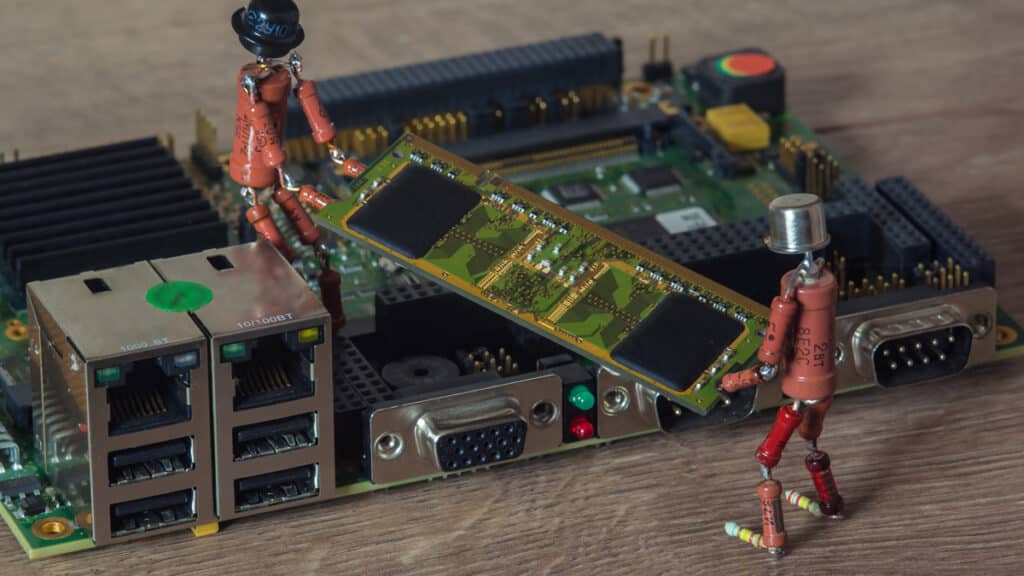Embedded passives are components built into the inner copper layers of the PCB substrate. In particular, embedded resistors are becoming standard in sophisticated commercial radars, antennas and sensors. TTI Market Eye published an article by Murray Slovick that elaborate on growth of embedded resistors in current and future applications.
Every day seems to bring another test of whether passives can succeed in managing to solve the design problems brought about by new applications.
For example, as communications networks for 5G, automotive and other applications continue to move toward mmWave frequencies, embedded passives technology – which has been reliably used in the defense and aerospace industry for over 20 years – now is likely to be an important innovation in electronic design.
Embedded passives are resistors or capacitors built into the inner copper layers of the PCB substrate. In particular, embedded resistors are becoming standard in sophisticated commercial radars, antennas and sensors. Mobile devices leave less room available for the ICs inside the housing as passive and active parts need adequate space to function without diminishing the integrity of the printed circuit board. To deal with this issue, resistors and, to a lesser extent, embedded capacitors and inductors will become embedded into printed circuit boards.
The embedded resistor is uniquely suited to meet the challenges posed by these new designs, materials and increased performance requirements – such as high-frequency response and form-factor reduction – for current and future electronic packages. Among their many desirable benefits include greater packaging densities, elimination of resistor assembly functions, weight savings and reduction in the parasitic inductances and capacitances associated with discrete chips.
Applications in Antenna Technology
Phased array antennas including Antenna in Package (AiP) and Antenna on Package (AoP) technology have been developed for 5G New Radio (NR) mmWave and sub-6 GHz RF modules for smartphones and other mobile devices. These mmWave antenna modules deliver capabilities across several spectrum bands in a very compact footprint that is well-suited for integration in mobile devices.
Other applications include high-frequency radar, power supplies, computer vision and applications with reliability and/or heat constraints, such as next-generation automotive parts.
One of the main drivers towards mmWave is the congestion of lower frequency bands (compared to low-GHz frequency bands, mmWave offers more bandwidth, less interference and more antenna gain/unit area thanks to small wavelengths and antenna scaling). In automotive and security applications, the respective ability of mmWave to see through fog (ADAS) and clothes (weapon detection) is also a benefit.
One of the antenna interface technology options design engineers have available is thin-film technology with embedded passives. Embedded passive components are known to be highly reliable, in part due to the aggressive sealing measures taken during the PCB’s lamination processes.
PCB Design Considerations
The “must-have” list for any given PCB design includes tighter routing, higher layer count, more surface area for components, and the lowest possible insertion loss and attenuation characteristics.
SMT passive component technology is also known to be reliable and can be compact; however, by reserving critical surface mount space for higher level components and modules, embedded passives help to achieve the best PCB real estate utilization.
Embedding components allows designers to create smaller PCB/package sizes with better signal integrity thanks to a more compact wiring design. By removing discrete SMTs from circuit boards, less room is used up by the interconnecting traces and vias. Manufacturers can then add other functions or reduce the size of the PCB for smaller applications and devices.
In most digital electronics designs, placing the resistor as close as possible to the pin/output also ensures the best signal integrity. Embedding passives also simplifies assembly through the need to mount fewer components, thereby increasing functionality and/or reducing total board area.
Because of the thin film nature of embedded resistors, for example, the component can be buried in the inner and outer layers of printed circuit boards without increasing the thickness of the board or occupying surface space in the manner of discrete resistors. This type of resistor becomes part of the etched and printed circuitry on the standard printed circuit board layer as it eliminates the need for solder joints.
Advantages of Embedded Resistors
Embedded resistor technology can be placed under the pin of the integrated circuit to avoid inductance and ensure better electrical performance. Electrical advantages include reduced crosstalk, noise and EMI (this last item will impact the functionality of the printed circuit board), as well as improved impedance matching and shorter signal paths (without the addition of via holes) improving both signal integrity and cost/performance ratios.
Reduced series inductance eliminates the inductive reactance of an SMT device. PCB design advantages include increased active components density and reduced form factors. Improved wire-ability results from the elimination of vias. Reliability is increased due to elimination of solder joints. What is more, embedded resistors can reduce parasitic capacitance (which can change the output of the circuits) and in general there is less noise generated by other components and circuitry near the PCB.
Other advantages include improved assembly yield, via count reduction, board densification and/or size reduction, board simplification (double-sided SMT to single sided SMT) and simpler circuitry features.
With embedded resistors, the resistor patterns can be designed in any orientation required by the I/O or to optimize spacing. One can also choose a fixed width for the resistor pattern, or keep the number of widths to a minimum and adjust the resistor length to achieve the required finished resistor value.
Processes such as the component soldering process and/or drilling can put mechanical stresses on the area between the copper and resistor alloy interface. Soldering can subject the PCB to temperatures greater than 200 degrees C for more than a minute. As such, the supplier will most likely recommended a minimum copper connection between the hole and the beginning of the resistor pattern to ensure adequate isolation from the stresses caused by these processes.
